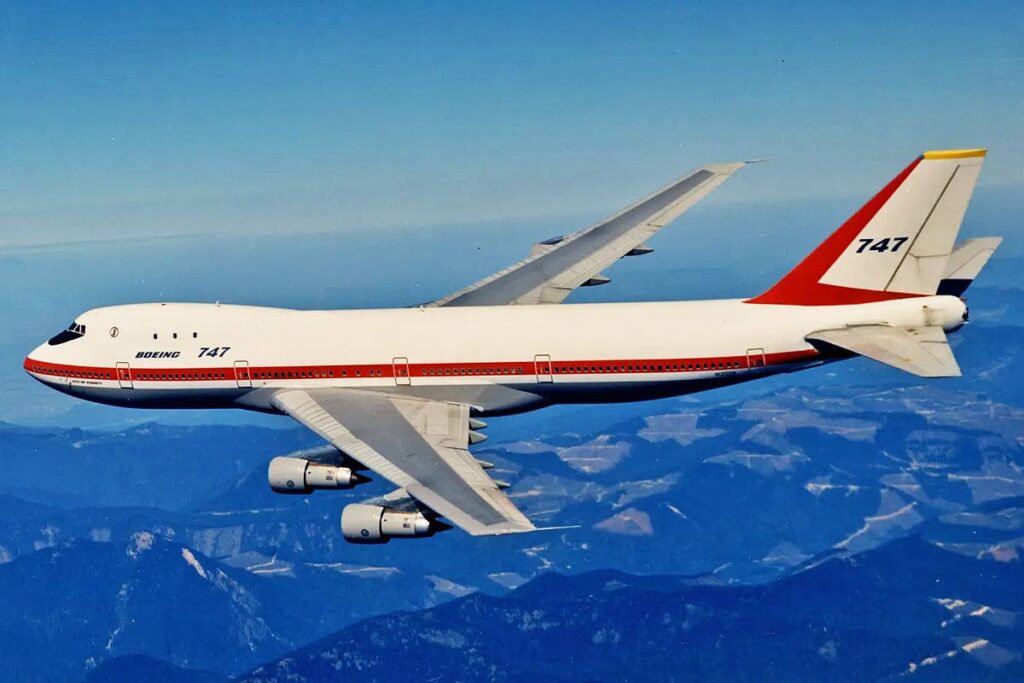Farewell to the jumbo jet

On January 31, at a function at its Everett facility in Seattle, Washington, attended by thousands of employees and company executives, the Boeing Commercial Airplane Company bade an emotional farewell to a Boeing 747-8 freighter aircraft.
The aircraft rolled off the assembly line on December 6, 2022. It is the final and 1,574th 747 aircraft to be manufactured by Boeing. It was delivered to Atlas Air, a New York-based company that operates a fleet of Boeing 747 freighter aircraft.
The event started with a parade in which employees carried flags with the logos of over 100 airlines at the time of delivery of the first 747 aircraft. The last two flags were carried by the grandson of the founder of Pan American World Airways (Pan Am) – the first airline to take delivery of a Boeing 747 aircraft and the chief pilot of Atlas Air’s Boeing 747 fleet.
The majestic Boeing 747, dubbed the Queen of the Skies, revolutionised air travel as the world’s first twin-aisle aircraft and enabled more people to fly farther, faster and more affordably than ever before. With its distinctively recognisable hump, this iconic aeroplane is a symbol of great engineering, innovation and an outstanding work of architecture which cemented Boeing’s dominance of the commercial aircraft market.
The genesis of the Boeing 747 was Pan Am’s desire for a jet with twice the payload capacity of a Boeing 707 aircraft and which could reduce seat-mile costs by 30 per cent. In 1965, Boeing began a design study with Pan Am and other airlines to better understand their aircraft requirements.

In 1966, Boeing and Pan Am entered into an agreement for Boeing to manufacture the four-engine 747 aircraft and Pan Am agreed to buy 25 of the aircraft, at a cost of US$525 million.
During the ceremonial 747 contract-signing banquet in Seattle at Boeing's 50th Anniversary in 1966, Juan Trippe, the then president of Pan Am, predicted that the 747 aircraft would be "…a great weapon for peace, competing with intercontinental missiles for mankind's destiny."
As the 747-launch customer and its early involvement in the 747 programme, Pan Am was able to influence the design and development of the aircraft so it could be easily adapted to carry freight and remain in production even if sales of the passenger versions declined. The partial double-deck 747 aircraft was designed with a raised cockpit so it could be converted to a freighter by installing a front cargo door. In future variants, the upper deck was extended to become an exclusive first-class passenger cabin with full sleeper seats.
The aircraft had its first flight test on February 9, 1969 and received its FAA certification in December 1969. It was nicknamed the "jumbo jet" as the first wide-body aircraft. On January 15, 1970, US First Lady Pat Nixon christened Pan Am's first 747 – Clipper Young America – at Washington Dulles International Airport. Instead of champagne, red, white, and blue water was sprayed on the aircraft.
The 747 entered commercial service on January 22, 1970 on Pan Am's New York-London route.
There were several Boeing 747-variant models with improved technologies, improved fuel performance and increased passenger capacities. The glass cockpit was introduced with the 747-400 series and owing to reduced pilot workload, the aircraft was certified for two-pilot operation.
In 1974, Pan Am was the first airline to fly a Boeing 747 into Piarco International Airport. Its arrival was preceded by an aggressive advertising campaign with the slogan, “We are First,” prominently displayed on T-shirts that were widely distributed to the public. Thousands thronged to witness this historic aviation event, creating one of the biggest traffic jams at the airport. Several passengers who got caught up in the traffic missed the outbound flight to New York.

Hundreds overwhelmed security personnel, breached the airport perimeter security fence and positioned themselves along both sides of the runway to witness the takeoff. The aircraft took off to the east, made a 180-degree turn and executed a low “gear up” flyby over the runway, much to the amazement of the crowds.
Subsequently, British Airways and KLM Royal Dutch Airlines and charter airlines, such as Tower Air, began to fly the 747 aircraft into Trinidad.
In 1992, Pan Am was the first airline to operate a Boeing 747 aircraft into Tobago.
Over the last few decades, airlines have pushed aircraft manufacturers for more fuel-efficient planes to reduce operating costs. Twin-engine jets such as the Boeing 777 aircraft have almost the same payload capacity and range as older, four-engine aircraft like the 747.
Since production began in 1967, more than 100 customers have bought 1,574 Boeing 747 aircraft, logging more than 118 million flight hours.
Even though production has ended, the 747 jumbo jet will continue to be operated by airlines, mainly for cargo, and supported by Boeing. The jumbo jet's influence on the development of commercial jet aircraft will endure for decades.


Comments
"Farewell to the jumbo jet"